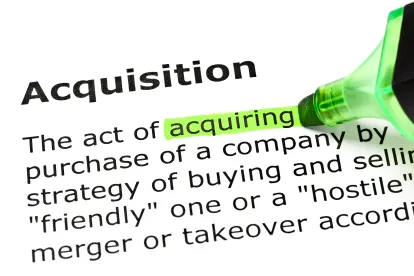When acquiring or selling a company, many nuances exist in various stages of the process, some of which are not readily apparent on their face. One of those nuances is the interplay between accounts receivable and working capital.
Often, in an acquisition, a portion of the purchase price will essentially remain in the target company’s bank account as “working capital.” Working capital is the amount of cash required for a company to operate over a set period of time. The amount of working capital typically will not be a set number, rather, there will be a working capital target on which to base the purchase price on, and the final working capital will be delivered at closing, or determined post-closing.
This means that how the target company operates its business over the time period actual working capital is measured may vary the dollar amount of the purchase price that remains in the target company’s bank account, and if the actual working capital number is lower, then the seller retains a larger portion of the purchase price. This can create an incentivized action by the seller that they would not otherwise take for the purposes of influencing the outcome of the actual working capital to retain a larger portion of the purchase price.
One way that working capital can be influenced is through accounts receivable. If the amount of accounts receivable collected by the target company in a set period is higher, then the net working capital needed to cover expenses is typically lower. This can be done by offering prepayment discounts to customers or expending extra effort to recover aged receivables, yet, in the ordinary course of business, the balance sheet would not typically contain the increase in collected accounts receivable.
This is particularly a concern when the transaction lasts multiple months, from the initial letter of intent to closing, because the seller will have more time to influence the numbers used to determine working capital. This can often be uncovered through the due diligence process, but it may be a time-consuming process.
However, this can primarily be addressed by drafting the purchase agreement to address working capital variance outside of the ordinary course of business in the preceding year specifically. This does not guarantee that the seller will not try to influence the numbers in their favor, but it does retain an argument for indemnification after the fact.



 />i
/>i

